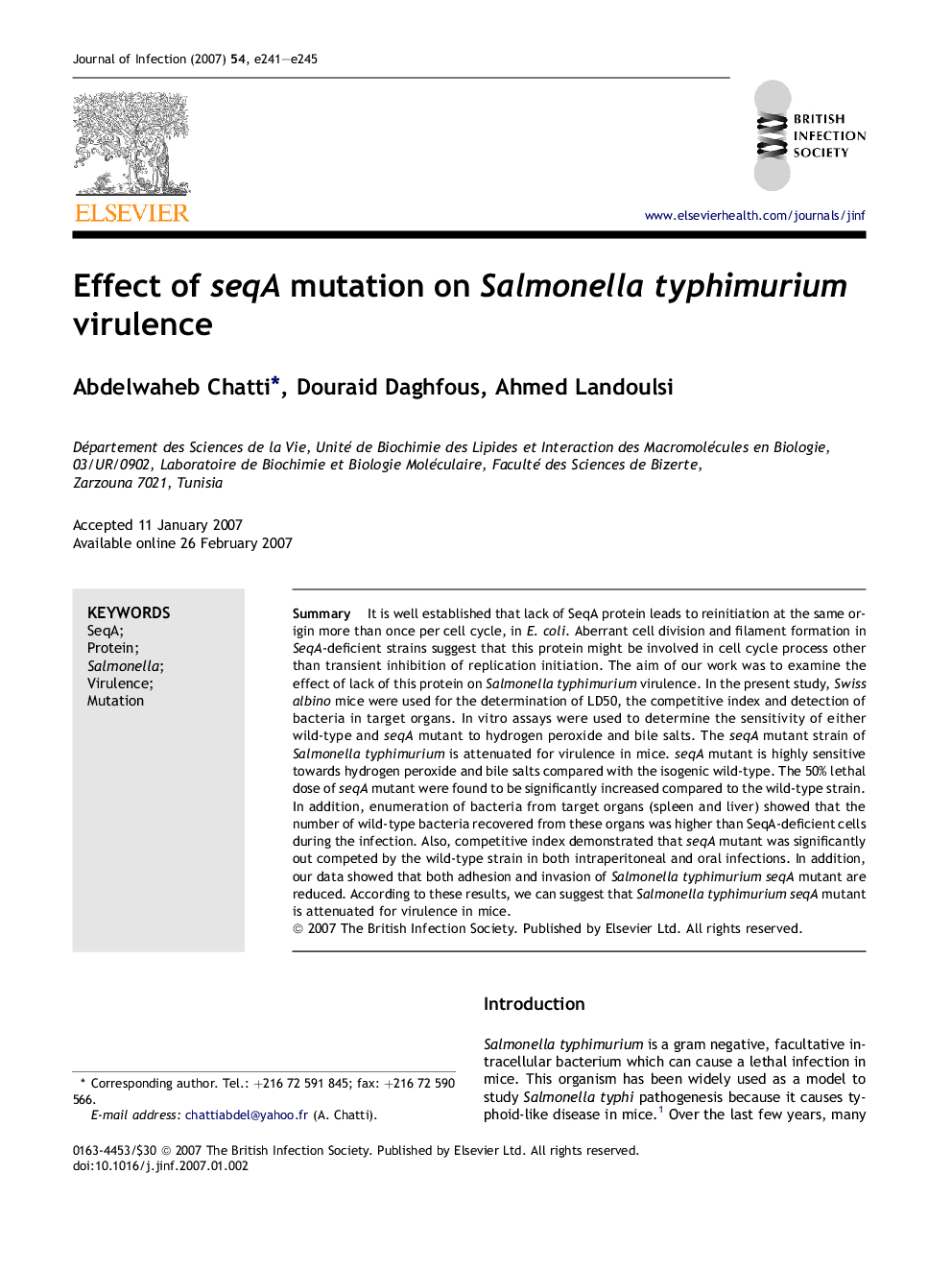| کد مقاله | کد نشریه | سال انتشار | مقاله انگلیسی | نسخه تمام متن |
|---|---|---|---|---|
| 3375990 | 1219703 | 2007 | 5 صفحه PDF | دانلود رایگان |

SummaryIt is well established that lack of SeqA protein leads to reinitiation at the same origin more than once per cell cycle, in E. coli. Aberrant cell division and filament formation in SeqA-deficient strains suggest that this protein might be involved in cell cycle process other than transient inhibition of replication initiation. The aim of our work was to examine the effect of lack of this protein on Salmonella typhimurium virulence. In the present study, Swiss albino mice were used for the determination of LD50, the competitive index and detection of bacteria in target organs. In vitro assays were used to determine the sensitivity of either wild-type and seqA mutant to hydrogen peroxide and bile salts. The seqA mutant strain of Salmonella typhimurium is attenuated for virulence in mice. seqA mutant is highly sensitive towards hydrogen peroxide and bile salts compared with the isogenic wild-type. The 50% lethal dose of seqA mutant were found to be significantly increased compared to the wild-type strain. In addition, enumeration of bacteria from target organs (spleen and liver) showed that the number of wild-type bacteria recovered from these organs was higher than SeqA-deficient cells during the infection. Also, competitive index demonstrated that seqA mutant was significantly out competed by the wild-type strain in both intraperitoneal and oral infections. In addition, our data showed that both adhesion and invasion of Salmonella typhimurium seqA mutant are reduced. According to these results, we can suggest that Salmonella typhimurium seqA mutant is attenuated for virulence in mice.
Journal: Journal of Infection - Volume 54, Issue 6, June 2007, Pages e241–e245